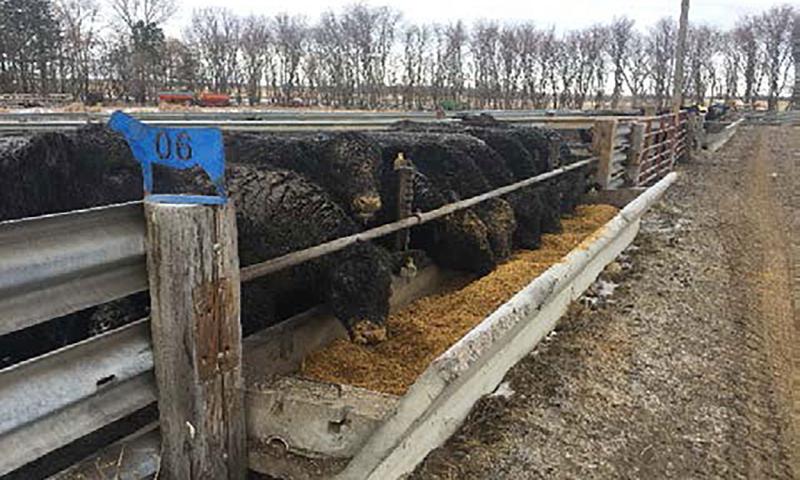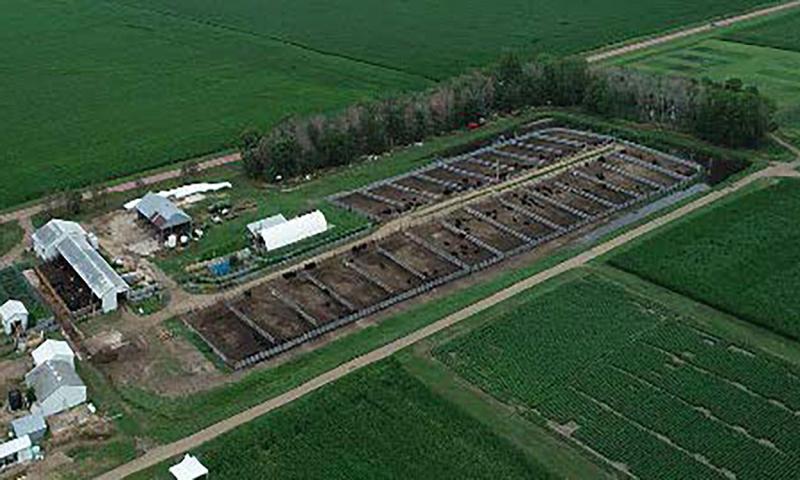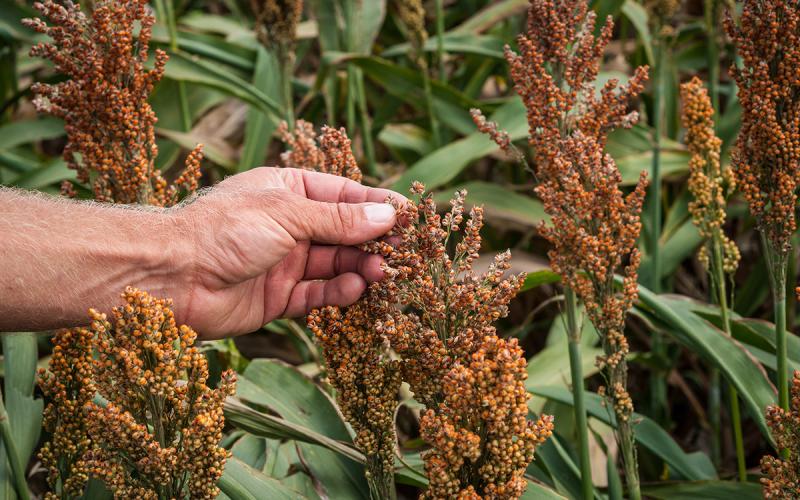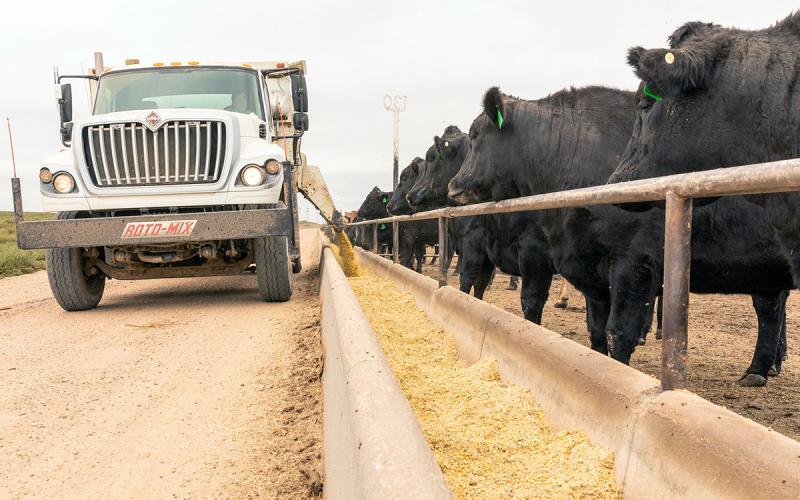
Key Takeaways
- Mud caused by excessive precipitation dramatically reduces cattle performance.
- Extending the concrete aprons and improving pen surface drainage improved feed efficiency by 16% during years with excess rainfall.
- Cost savings from reduced feed costs and fewer days on feed paid for approximately 40% of initial investment in the first year.
The adverse effects of mud on cattle feeding performance are well-understood and no secret, especially in the Midwest. Even small amounts of mud reduce feed intake and gain, resulting in poorer feed efficiency and increased cost of gain. The impacts on cattle comfort and health are additional negatives that impact cattle feeders during years with excessive snow and rain.
To address these issues, many Midwestern cattle feeders elect to build confinement barns, either bed-pack or slatted-floor facilities. That approach solves many of the problems with open pens, although with a significant financial investment. However, what approaches are available to retrofit existing open pens, and are they cost effective?
Case Study: SDSU Southeast Research Farm
Short of completely starting over, pouring additional concrete, and working on improving pen surfaces are the most likely approaches to improve poor-weather performance in an open yard. That was the approach used at the SDSU Southeast Research Farm in 2018. We can use data from pre- and post-renovation cattle performance to assess economic payback.

During the 2017-2018 and 2018-2019 feeding years, we fed groups of calves (steers and heifers) from herds that were cooperating on a reproductive technologies research project to examine the impacts AI and estrous synchronization had on feedlot performance. In 2017, the feedlot pens at that facility had 10 or 12 feet of concrete apron, with some pens needing additional fill dirt. Precipitation in both 2018 and 2019 was well above average (10 and 7 inches above normal, respectively). The additional precipitation led to muddy conditions that were challenging to feed and manage feedlot cattle.
Given those conditions, it should not be surprising that closeouts in 2018 were less than impressive. Average gain on the cattle was 2.8 pounds per day with a feed conversion of 7.3, which was disappointing considering the genetic potential of these cattle. After careful consideration, the farm board decided that they needed to invest in additional concrete to conduct meaningful research, so in fall of 2018 they extended the aprons to twenty feet in every pen. There were also opportunities during the fall and winter to correct drainage issues with additional fill and scraping.
The results were dramatic. Table 1 shows the closeouts for the two years. Although not identical, the cattle were sufficiently similar, so these differences are more related to pen conditions than cattle genetics.
How would these changes affect profitability at closeout? If we assumed that we needed cattle to gain 750 pounds while on feed, and our diet costs $250 per ton of dry matter, the difference in feed costs would be $112.50. The slower gaining set would have required an additional 37 days on feed, which would add approximately $20 per head in yardage, plus nearly $20 per head in additional interest expense for a total profit change of $152.50 per head in the first year. The initial investment was approximately twice that number on a per-head basis, so while not paid for in one year, improved performance in a poor season dramatically shortened the payoff period.
| Item |
|
|
|---|---|---|
| Dry matter intake, lbs. |
|
|
| Average daily gain, lbs. |
|
|
| Feed conversion |
|
|
Source: SDSU Research
Conclusion
Of course, not every year is well above average for precipitation, and in drier conditions there may not have been a difference at all. However, successful cattle feeding in the Midwest requires the ability to adjust to extreme weather conditions. In this case, investing resources to reduce the risk of severe performance losses from mud has improved both performance and cattle comfort over multiple turns in that facility after the initial investment.
While we cannot completely escape bad weather, prudent facility investments are valuable tools to mitigate those risks. In this instance, extending the apron size by adding more concrete was effective during excess rain years.

